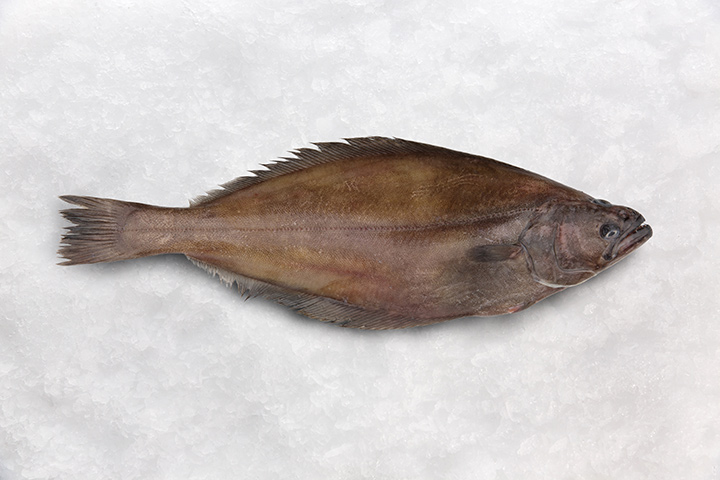Asian and European markets teem with opportunity for Canada’s northern fisheries

Canada’s free trade agreements are providing broader market opportunities for enterprises that operate in our most remote northern areas.
The terrain of the Qikiqtani region, the easternmost region of Nunavut, is dramatically beautiful.
Glacial erosion from ancient ice ages carved deep valleys and beautiful fjords that provide shelter for an array of northern wildlife on land and in the chilly tidal waters.
Black-legged kittiwakes, northern fulmars and black guillemots circle above hoodoos (flat-topped pillars of stone) and sheer cliffs. Down below, ringed seals, bearded seals, polar bears and walruses make occasional appearances.

Farther out in Arctic waters, the narwhals and beluga whales breach the swells. This pristine seascape is resplendent with cold-water shrimp (Pandalus borealis and Pandalus montagui) and the flatfish known as turbot or Greenland halibut (Reinhardtius hippoglossoides).
Worldwide demand for seafood from Arctic waters is supporting a growing local fishery.
The Inuit have fished these waters traditionally for thousands of years, but the commercial fishery in the region is relatively new.
One of the primary local players in this commercial fishery is Qikiqtaaluk Corporation, an Inuit birthright corporation. It is a wholly owned subsidiary of the Qikiqtani Inuit Association and is charged with the responsibility of economic development and wealth generation for the region’s Inuit.
The Fisheries Division of Qikiqtaaluk Corporation is a major player in the Canadian offshore cold-water shrimp and turbot industries.
Jerry Ward, Qikiqtaaluk Corporation’s Director of Fisheries, says that as the fisheries are relatively new, the region lacks the infrastructure needed to off-load, store and transship its catches to world markets. All of the offshore mobile gear factory freezer vessels that harvest in Nunavut’s adjacent waters off-load their catches in Newfoundland and Labrador ports, some 1,000 to 1,500 kilometres south, whereas the smaller fixed gear factory freezer vessels primarily off-load their catches in Greenland ports.
“There are no off-loading ports in Nunavut,”
says Ward. “All of the catch is frozen at sea on board the factory freezer vessels.”
“On a factory freezer mobile gear vessel, when fishing for shrimp, the crew get on for two trips and off for two trips, with each trip usually lasting 15 to 20 days. All the crew get on and off the vessels from ports in Newfoundland. With turbot, the trips are longer and they are out for 40 or 45 days, and they rotate with one trip on and one trip off.”

Qikiqtaaluk Corporation’s vessel, the Saputi, is a large 76-metre multi-species factory freezer trawler. The Saputi makes between 10 and 12 trips each year. The vessel can carry up to 900 metric tons of turbot or 600 metric tons of northern shrimp, and it has an average daily freezing capacity for 35 metric tons of turbot or 50 metric tons of shrimp
The markets for the Saputi’s catches are primarily overseas.
“Asian countries are by far the biggest market for us,”
says Ward. “The vast majority of shrimp processed on the boat is bound either for Asia or for Europe. In the case of turbot, our two big markets are China for whole round fish, and Japan for the head-off gutted turbot.”
Canada’s recent trade agreements, such as the Comprehensive Economic and Trade Agreement (CETA) with the European Union or the Comprehensive and Progressive Agreement for Trans-Pacific Partnership with the Asia Pacific region, are opening new market opportunities. In doing so, these trade agreements are supporting local efforts in employment, self-governance and sustainability.
CETA was extremely important to us for both turbot and shrimp. Tariffs are practically non-existent now for the species that we harvest. These trade agreements are good for maximizing the dollar return to Nunavut and expanding our customer base.
The corporation reinvests in its fisheries for training, infrastructure and research to support a sustainable fishery, community and region.
“Our mission is to responsibly harvest allocated fishing quota,”
states Harry Flaherty, President and Chief Executive Officer of the Qikiqtaaluk Corporation Group of Companies. “In turn, we reinvest revenues in projects and services that foster wealth, Inuit employment and self-reliance.”
Qikiqtaaluk Corporation holds 1.5 of the 17 available offshore shrimp licences in Canada and also has a share of the allocation of turbot and shrimp allocated to Nunavut through the Nunavut Wildlife Management Board’s access and allocations process.
Ward says the Nunavut fishery provides more than 300 Nunavut Inuit with good high-paying jobs that last all year round.
“That’s a really big accomplishment for this region,”
says Ward.
- Date Modified: